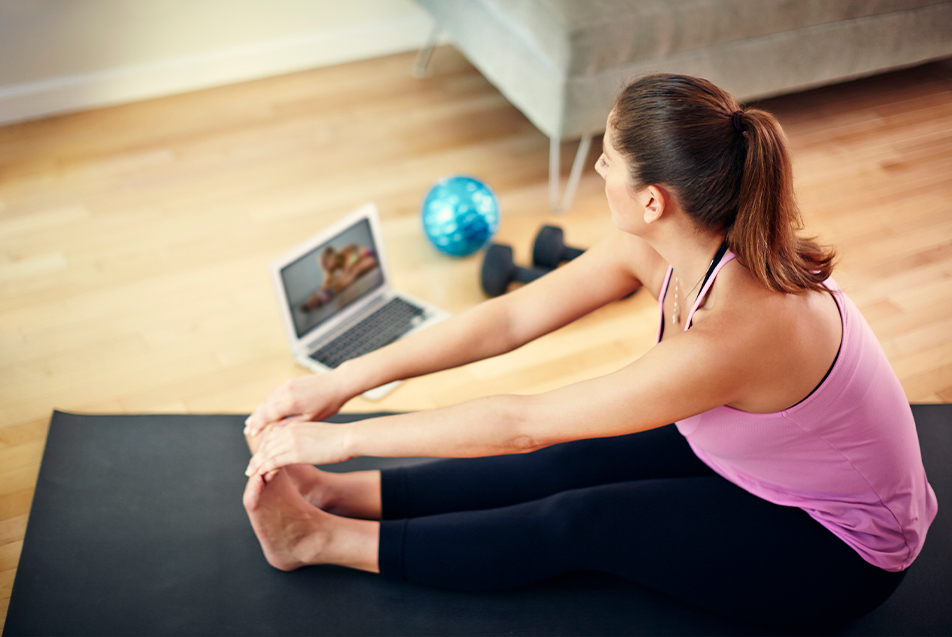
This post was written by Kim Cowan, performance specialist, Parkview Sports Medicine.
When setting up a home gym, there are two main items to consider: the amount of space you have available and your budget, or what you’re comfortable spending on equipment. If money and space are plentiful, then the sky’s the limit, but not everyone has both at their fingertips. The good news? You don’t necessarily need a lot of equipment to meet your fitness goals.
Choosing the right space
If an extra room isn’t available, pick a space that is going to be big enough for an exercise mat, dumbbells and other accessories. This area could be a corner in your family room, a space in your bedroom or a dedicated area within your garage or basement. No matter where you set things up, be sure to make the space both accessible and convenient.
Choosing the right equipment
Once you establish your space, it’s time to choose your equipment and accessories. You can base your choices on how much money you want to spend and the fitness goals you want to reach.
- Dumbbells: Ideally, you will want to have three different sizes (light, medium and heavy) to choose from for various exercises. A variety of dumbbell sizes allows for variations in upper and lower body movements. In most cases, 5-15-pound dumbbells are a great addition to a home gym, but you should base the weight on your athletic ability, experience and goals.
- Resistance bands: Workout bands are a great alternative to dumbbells. They are more affordable and a real space saver, too. Like their name, these bands will add resistance to your exercises and typically come in different weights like light, medium or heavy. Each band will state its estimated resistance strength, but it’s a good idea to have both light and heavy options available. You can also perform all your basic exercises, from squats to bicep curls, using resistance bands. These are an excellent choice when space and money are limited.
- Exercise balls: A great addition to any home gym, these rubber balls can be used for a variety of core exercises, as well as a weight bench substitute. They are very affordable, often ranging in price from $10-$20, and come in different sizes to fit your height. Exercise balls allow an individual to perform countless ab, core and stability exercises. Most balls will come with an exercise manual for additional movement ideas too.
- Medicine balls: For advanced athletes, medicine balls can be extremely beneficial. They come in different weight sizes, ranging from 5-50 pounds, and are used to add resistance to almost any exercise. You can challenge your body by simply holding the ball while performing exercises like squats and lunges.
Alternatives to gym equipment
If gym equipment is not available, you can always rely on your bodyweight. Bodyweight exercises are done without any equipment or accessories. Some of the most popular movements include squats, lunges, push-ups and planks. Combining these movements will give you a total body workout without the need for any equipment besides space.
Whether you choose dumbbells, resistance bands, exercise balls, medicine balls or bodyweight exercises, remember that they are all choices that will challenge your body and help you meet your fitness goals.



